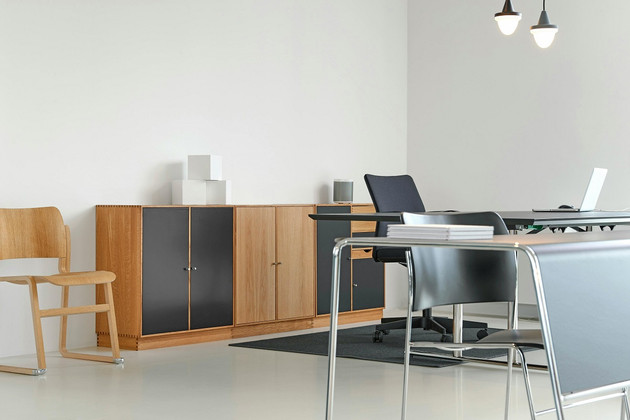The Psychology of Office Layouts: How Space Design Impacts Employee Performance
Posted by The Urban Hyve Team on 17th Apr 2024
In the modern workplace, office design goes beyond aesthetics; it influences employee behaviour, mood, and ultimately, performance. The arrangement of desks, the choice of furniture, and the layout of spaces all play a crucial role in shaping the psychological and emotional experience of employees. Understanding the psychology behind office layouts is essential for creating work environments that foster productivity, creativity, and overall well-being.
1. The Open Office Debate
Open office layouts have become increasingly popular in recent years due to their purported benefits in promoting collaboration and communication. However, research suggests that open-plan offices may also lead to distractions, decreased privacy, and increased stress levels among employees. Understanding the psychological implications of open office designs can help companies strike a balance between collaboration and individual focus.
2. The Importance of Privacy
While collaboration is important, so is privacy. Employees need quiet, secluded spaces where they can concentrate on tasks without interruptions. Lack of privacy in the workplace can lead to heightened stress levels, decreased job satisfaction, and reduced productivity. Incorporating private work areas, such as individual offices or soundproof booths, into office layouts can help mitigate these issues and support employee well-being.

Mod Zip Single Activity Based Working Desk
3. The Influence of Colour
Colour psychology plays a significant role in office design, as different colours can evoke various emotions and affect mood and productivity. For example, blue is often associated with calmness and focus; therefore making it ideal for areas where concentration is key. Similarly, green promotes relaxation and creativity, thus making it suitable for collaborative spaces. By strategically incorporating colours into the office environment, companies can create a harmonious atmosphere that enhances employee performance.
4. The Power of Natural Light
Exposure to natural light has been shown to have numerous benefits for employee health and well-being, including improved mood, increased productivity, and reduced absenteeism. Office layouts that maximize access to natural light by positioning workstations near windows or incorporating skylights can positively impact employee performance and satisfaction. Additionally, natural light helps regulate circadian rhythms, leading to better sleep quality and overall health.
5. The Role of Ergonomics
Ergonomic design principles are essential for creating comfortable and safe work environments that support employee health and productivity. Office layouts should prioritize ergonomic furniture, such as adjustable desks and chairs, to promote proper posture and reduce the risk of musculoskeletal disorders. By considering the ergonomic needs of employees, companies can create workspaces that facilitate movement, minimize discomfort, and enhance overall well-being.

Rotating White Height Adjustable Laptop Desk w/ Cooler Fan
6. The Influence of Spatial Arrangement
The layout of office spaces can significantly impact employee interactions and workflow. For example, clustering teams together in close proximity can facilitate communication and collaboration, while placing departments with similar functions near each other can streamline processes and improve efficiency. Understanding the psychological effects of spatial arrangement allows companies to design layouts that promote teamwork, creativity, and productivity.
7. The Role of Personalization
Allowing employees to personalize their workspace can boost morale, motivation, and productivity. Whether it's adding personal photos, artwork, or plants, giving employees the freedom to customize their environment creates a sense of ownership and belonging. Office layouts should accommodate individual preferences and provide opportunities for self-expression to foster a positive work culture and enhance employee engagement.
In conclusion
The psychology of office layouts is a multifaceted topic that encompasses various factors, including privacy, colour, natural light, ergonomics, spatial arrangement, and personalization. By understanding how space design impacts employee behaviour and performance, companies can create work environments that support productivity, creativity, and overall well-being. Investing in thoughtful office layouts not only enhances employee satisfaction but also contributes to organizational success in today's competitive business landscape.










